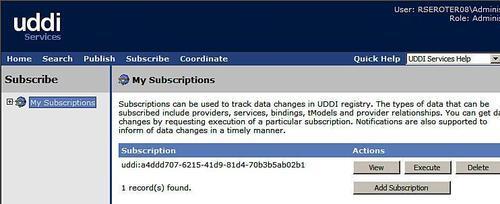Universal Description and Discovery Information(UDDI)
is a type of registry whose primary purpose is to represent
information about web services. It describes the service providers, the
services that provider offers, and in some cases, the specific technical
specifications for interacting with those services. While UDDI was
originally envisioned as a public, platform independent registry that
companies could exploit for listing and consuming services, it seems
that many have chosen instead to use UDDI as an internal resource for
categorizing and describing their available enterprise services.
Besides simply listing
available services for others to search and peruse, UDDI is arguably
most beneficial for those who wish to perform runtime binding to service
endpoints. Instead of hard-coding a service path in a client
application, one may query UDDI for a particular service's endpoint and
apply it to their active service call. While UDDI is typically used for
web services, nothing prevents someone from storing information about
any particular transport and allowing service consumers to discover and
do runtime resolution to these endpoints. As an example, this is useful
if you have an environment with primary, backup, and disaster access
points and want your application be able to gracefully look up and
failover to the next available service environment. In addition, UDDI
can be of assistance if an application is deployed globally but you wish
for regional consumers to look up and resolve against the closest
geographical endpoint.
UDDI has a few core hierarchy
concepts that you must grasp to fully comprehend how the registry is
organized. The most important ones are included here.
|
Name
|
Purpose
|
Name in Microsoft UDDI services
|
|---|
|
BusinessEntity
|
These are the service providers. May be an organization, business unit or functional area.
|
Provider
|
|
BusinessService
|
General reference to a business service offered by a provider. May be a logical grouping of actual services.
|
Service
|
|
BindingTemplate
|
Technical details of an individual service including endpoint
|
Binding
|
|
tModel (Technical Model)
|
Represents metadata for categorization or description such as transport or protocol
|
tModel
|
As far as
relationships between these entities go, a Business Entity may contain
many Business Services, which in turn can have multiple Binding
Templates. A binding may reference multiple tModels and tModels may be reused across many Binding Templates.
What's new in UDDI version
three? The latest UDDI specification calls out multiple-registry
environments, support for digital signatures applied to UDDI entries,
more complex categorization, wildcard searching, and a subscription API.
We'll spend a bit of time on that last one in a few moments.
Let's take a brief lap around
at the Microsoft UDDI Services offering. For practical purposes,
consider the UDDI Services to be made up of two parts: an Administration
Console and a web site. The website is actually broken up into both a
public facing and administrative interface, but we'll talk about them as
one unit.
The UDDI Configuration
Console is the place to set service-wide settings ranging from the
extent of logging to permissions and site security.
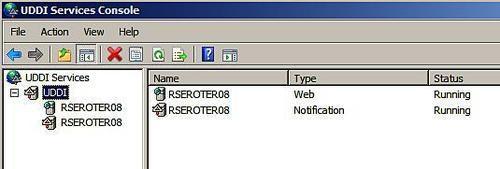
The site node (named UDDI)
has settings for permission account groups, security settings (see
below), and subscription notification thresholds among others.
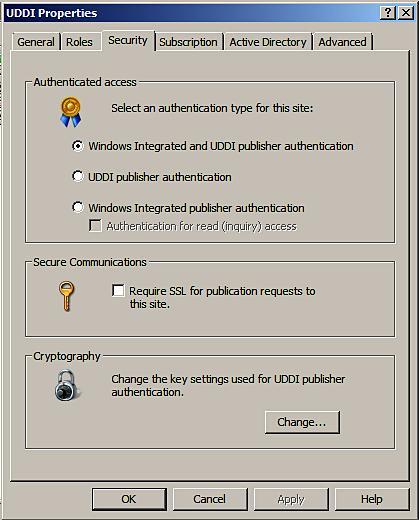
The web node, which resides immediately beneath the parent, controls web site setting such as logging level and target database.
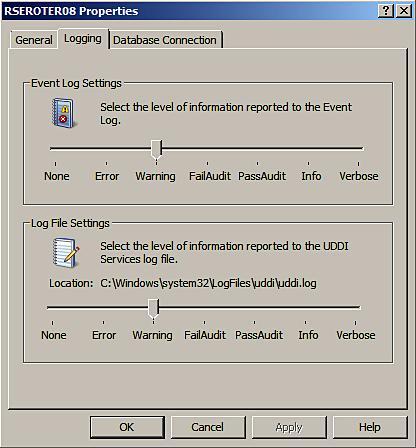
Finally, the notification node manages settings related to the new subscription notification feature and identically matches the categories of the web node.
The UDDI Services web site, found at http://localhost/uddi/, is the destination for physically listing, managing, and configuring services.
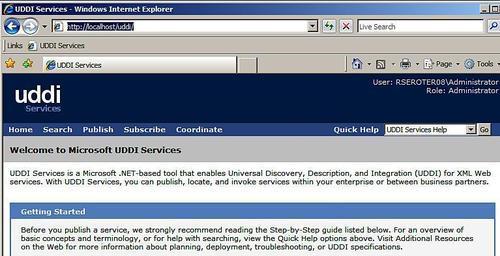
The Search page enables querying by a wide variety of criteria including category, services, service providers, bindings, and tModels.
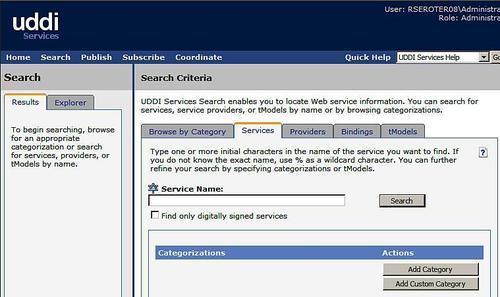
The Publish page is where you go to add new services to the registry or edit the settings of existing ones.
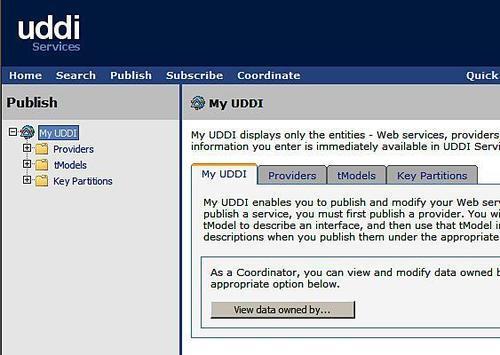
Finally, the Subscription
page is where the new UDDI version three capability of registry
notification is configured.
